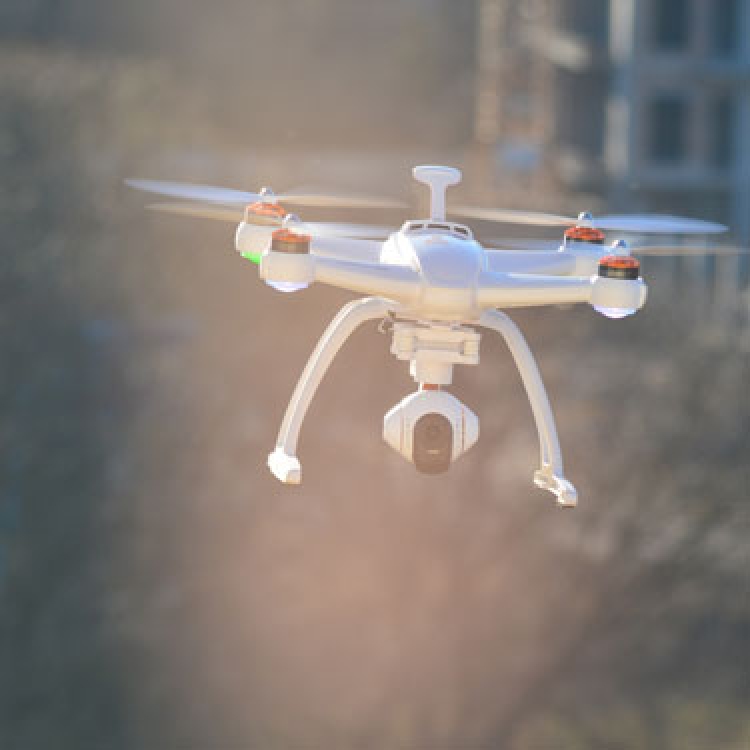The construction site of the future: risk or opportunity?

Technological innovation is revolutionising the risk profile of construction projects, opening up huge opportunities and risks. Companies that identify and mitigate these risks will gain a competitive edge, argues John Roberts of Willis Towers Watson.
An unmanned drone hovers high overhead, pausing momentarily as quick bursts of light flash from its metallic belly. It dips then silently zooms off beyond sight.
On the ground below, several large driverless vehicles roam around with exacting navigational precision. One such vehicle edges around a steep, wide pit while another pushes the ground beneath it into neatly measured piles. One of the vehicles, a driverless bulldozer, sits idle off to the side. It is being serviced by a specially-trained mechanic. The mechanic is one among a few senior designers, robot technicians and a small maintenance crew, the only human presence on the site.
This scene is not from a post-apocalyptic movie or an excerpt from a science fiction novel. It is the reality of a very probable construction site in the not-so-distant future.
Undeniable technological benefits
The innovations described are only a few examples of the trending construction technologies. The construction industry, not known for its technological innovation, is catching up for lost time. According to the 2015 NBS National BIM Report (UK), 92% of survey participants expect to be using "Building Information Modelling" (BIM) within three years, and 95% within five years.
New technology has the potential to bring efficiencies, improvements in quality and advances in safety among other things. BIM and "computer aided design" (CAD) technologies have, and will continue to revolutionise the planning stages of construction projects. Driverless machinery will not only make job sites potentially more efficient but may also help address a potential shortage of construction workers. Drones will provide a way to obtain real-time data on job progress, identify potential hazards or quality issues and help acquire other useful information in a very expeditious and cost-effective manner.
The "internet of things", a new reality in which data is collected and managed from a network of devices and sensors, processed, and then shared with other connected "things", will undoubtedly lead to more informed and strategic decision-making, on and off the jobsite. And finally, but perhaps most importantly, such mechanised equipment will lead to safer inspections and progress reports, allowing managers to see higher elevations or hard-to-reach spots for inspections by placing machines in workplace conditions that are potentially unsafe for humans.
Changing a project's risk profile
The degree to which technologies are positively revolutionising a typical construction project will be accompanied by an equally dramatic shift in a project's risk profile. While some risks will likely lessen in severity, the new or evolving risks that these technologies bring may outweigh those that diminish if the risks are not properly managed:
- Safety concerns
If 3D printed and prefabricated modular buildings are subpar when "put together", this could have serious safety implications. There is also the potential for drone collisions, leading to bodily injury to humans and animals. - Undefined exposures
In defining and articulating the scope of liability, ambiguity is probably most apparent with cyber-related issues and drones, which may be excluded in a standard liability policy, as it excludes liability arising out of the insured's "ownership, maintenance or use" of an auto, aircraft or watercraft. - Manufacturing and product risks for mechanised machinery
As the lines between human work and machine work start to blur, so may the lines between product liability and professional liability cover. - Property exposures
A malfunctioning drone or driverless bulldozer may crash into a building or personal property. Theft risk may also be a heightened due to less human presence on the site. - Ambiguity regarding responsibility
Who is liable if a driverless bulldozer runs into a building? Is the crash a result of negligent operation, a defect or malfunction, or is the designer responsible? - Privacy issues
Concerns relate to intentional surveillance, the potential for unintentional capturing of images in the course of inspection of a construction site or even the inadvertent capture or transmission of personal, non-public information such as intellectual property, trade secrets and other confidential data. - Financial risks due to changing business models
Advancements such as prefabricated modular buildings rely on supply-chain strategies that could affect schedules, increase the cost of work and thus have potentially significant financial implications. - Cyber security risk
As web-based and interconnected tools become the new norm in construction, so will the threat of cyber attacks. Security breaches can end up costing millions, but proprietary advantage can also be compromised as years of R&D and related investment could be lost if someone steals or leaks information. Furthermore, drones are connected to electronic communication systems and therefore vulnerable to attack by hacking potentially resulting in drone theft and in the most extreme of cases, terrorism.
Many UK contractors recognise the value of technological innovation in construction, and while the futuristic construction site described may not happen immediately, the technology is here and moving more quickly than the thinking, planning and even legislation. Where there is uncertainty there is opportunity and the firms that are able to take advantage of the new opportunities, while proactively identifying and mitigating the associated risks, will most certainly have the competitive edge in this radically new environment.

John Roberts is construction industry leader, UK, at Willis Towers Watson
